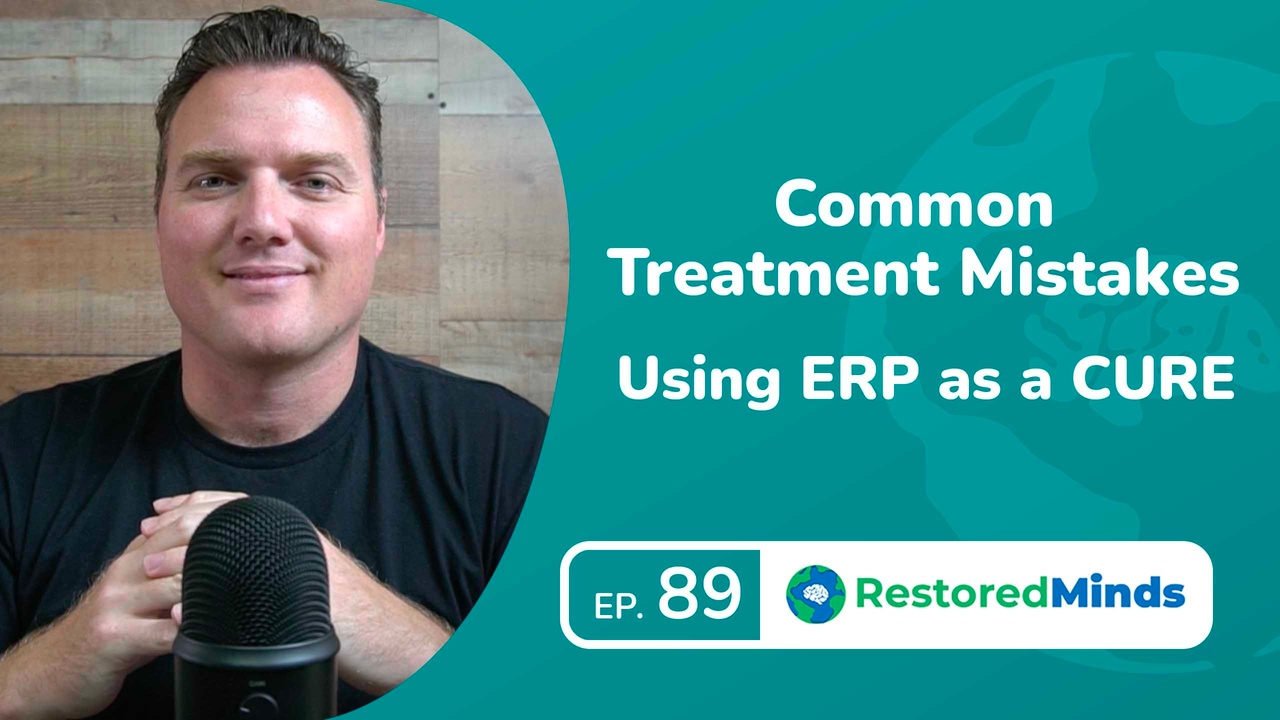Common Treatment Mistakes - Using ERP as a CURE
Apr 28, 2021
Common Treatment Mistakes: Using ERP as a Cure for OCD and Anxiety
What is ERP?
Exposure and Response Prevention (ERP) is a widely recognized and effective treatment for OCD and anxiety. However, it is often misunderstood and misused. Many individuals erroneously believe that ERP is a cure-all solution for their intrusive thoughts and anxiety.
The Misconception: ERP as a Cure
When people start their journey toward recovery, they often seek immediate solutions to their intrusive thoughts and discomfort. In their quest, they come across ERP and quickly adopt it, expecting it to eliminate all their symptoms. This approach is fundamentally flawed and only leads to frustration.
Understanding ERP Correctly
To use ERP effectively, it’s essential to understand its purpose. ERP involves:
-
Exposure:
Deliberately confronting feared thoughts, images, objects, and situations.
-
Response Prevention:
Refraining from performing any compulsive behavior that seeks to neutralize or diminish the feared outcome.
For example, if someone has a fear of contamination, ERP might involve touching a door handle perceived as dirty and then resisting the urge to wash their hands. This process triggers anxiety and intrusive thoughts, yet the individual is encouraged to sit with this discomfort rather than act on it.
The Real Objective of ERP
ERP is not designed to eliminate anxiety or intrusive thoughts immediately. Instead, its goal is to teach the brain that these stimuli are not actually dangerous. Over time, with repeated exposures and the prevention of compulsive responses, the brain learns to stop setting off the anxiety alarm.
The Trap of Misapplication
Often, people apply ERP with the goal of immediately eradicating anxiety and intrusive thoughts. When these feelings and thoughts persist, they conclude that ERP isn’t effective. This misunderstanding leads them to abandon ERP prematurely.
The Correct Approach to ERP
The key is consistent and correct application. ERP should not be viewed as an instant fix but as a tool to rewire your brain through neuroplasticity. This process involves:
-
Repeated Exposures:
Gradually confronting the feared situation multiple times.
-
Preventing Responses:
Avoiding compulsive behaviors every time anxiety is triggered.
By following this method, the brain eventually learns that the situation is not harmful, which significantly reduces anxiety and obsessive thoughts over time.
Why Cognitive Behavioral Therapy?
ERP is a form of Cognitive Behavioral Therapy (CBT), which focuses on how we respond to thoughts and feelings behaviorally. Studies continually show that CBT, including ERP, is the most effective treatment for OCD and anxiety.
Conclusion
In summary, ERP should not be misconstrued as a quick cure for OCD and anxiety. Instead, its role is to facilitate long-term changes in how the brain responds to feared stimuli. Understanding this correct application can save you from unnecessary frustration and help you achieve the real benefits of this powerful intervention.
We offer more in-depth guidance and personalized coaching programs through our Taking Back Control program, so be sure to explore these additional resources.


